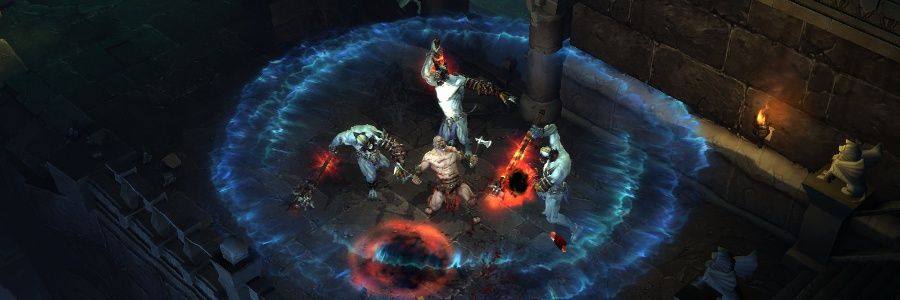 Welcome back to our countdown of the top ten moments in black comics history. Last time, as part of our celebration of Black History month, we took a look at five important moments, characters and titles that helped shape the industry. Today we close out our list with the top five events so far in the black comic experience. And at number five on that list is one of the most popular comics and milestones in all comics history, Spawn #1.
Welcome back to our countdown of the top ten moments in black comics history. Last time, as part of our celebration of Black History month, we took a look at five important moments, characters and titles that helped shape the industry. Today we close out our list with the top five events so far in the black comic experience. And at number five on that list is one of the most popular comics and milestones in all comics history, Spawn #1.  5) Spawn #1
5) Spawn #1In 1991, Todd McFarlane, indisputably the most popular creator in comics at the time, left Marvel Comics to form Image Comics alongside other hot artists of the day like Jim Lee. The fledgling company's flagship title? McFarlane's Spawn, which sold an amazing 1.7 million copies of the first issue, which detailed the origin of the demonic hero Spawn, who happened to be African-American. Not only was Spawn #1 one of the best selling comics in the history of the medium, it was also notable for the fact that the character's ethnicity was incidental to the comic -- he wasn't Black Spawn, he was just Spawn, a hero who happened ot be black. The fact that he became so popular with mainstream audiences, eventually spawning (no pun... okay, who am I kidding) a cartoon series and a live action film, was indicative of how the industry -- and society at large -- had progressed since the early days of the medium.
 4) All-Negro Comics #1
4) All-Negro Comics #1By 1947, comic books had become one of the most popular forms of entertainment in America, selling over a hundred million copies a month to readers of all ages. Yet there still was almost no African-American presence on the printed page. New reporter Orrin Evans decided to change that by putting together his own comic, aimed at black readers, featuring black characters and created entirely by black writers and artists. The result was All-Negro Comics #1, featuring strong depictions of African-American heroes like hardboiled detective Ace Harlem. Unfortunately, though material was completed for the second issue, it was never to be published; newsprint distributors, apparently strong-armed by other publishers, refused to sell any paper to Evans. With no means of printing the second issue, the enterprise was doomed. But its existence was still an important milestone in comics history and eventually paved the way for black creators and characters alike.
 3) EC Comics Faces "Judgment Day"
3) EC Comics Faces "Judgment Day"In the mid-50's, EC Comics waged a public battle against both good taste and the American government, as their over the top horror comics ran afoul of McCarthyist censorship in a series of highly publicized public hearings. But while EC eventually lost the battle, with the Comics Code Authority taking over and gutting the industry, publisher Bill Gaines and his team of creators, who numbered among the best talents working in the medium, continued to push the envelope even after the crackdown. And the frequent focal point of their war with authority came over their repeated anti-racism stories. Arguably the most famous story EC ever published, and still one of the best known comic stories ever, was Judgment Day, a sci-fi cautionary tale about a human emissary sent to gauge whether the planet Cybrinia is ready to join their version of the Federation. After inspection, he discovers that the plane,t which is populated by robots of different colors, is too racist to join; the story ends with the revelation that the Earthman, who up to this point has been hidden beneath his giant spacesuit, is African-American.
The story (which you can read here)debuted to acclaim in 1953 before the code went into effect, but when Gaines tried to reprint it in 1956, this was too much for the Comics Code, who demanded that the lead character be changed to a white protagonist, a move that would have undermined the entire story. When Gaines drew a line in the sand and refused to change one word or picture, threatening to sue the CCA, they relented, and EC Comics ran the story in Incredible Science Fiction #33, the last comic the company would ever publish. The company's stand -- and the message of the story -- remains a central moment in comics lore.
 2) The Black Panther Debuts
2) The Black Panther DebutsAs we've seen, black characters were few and far between over the first four decades of comics; and outside short-live groundbreakers like All-Negro Comics and Lobo, positive portrayals were even rarer. By 1966, though, the superhero revival was in full effect, with upstart Marvel Comics changing the way superhero comics and comics in general were thought of. And Marvel's flagship title was Fantastic Four, which, behind the legendary creative team of Stan Lee and Jack Kirby was in the midst of an unprecedented run of classic comic stories. Fresh off their work on the Galactus trilogy (FF #48-50) and perhaps the most famous story the two ever wrote, "This Man, This Monster" (FF #51) the time was right to once again change the way comics did business. Fantastic Four #52 introduced the Black Panther, a noble African king who, in his iconic black costume, fought evil wherever it was found. This wasn't the first noble African prince Lee had helped bring to the market -- in 1954, as editor in chief, he oversaw the publication of Jungle Tales, which featured one of the first heroic black comic protagonists, Waku, Prince of the Bantu. But while that was a short term (though notable) effort, the introduction of Black Panther as the first black costumed hero paved the way for everything that has been done with black superheroes since. And while the folks at Dell had given it a good shot with Lobo a year earlier, Lee and Marvel by this time had the clout to do whatever they wanted, meaning distributor protests couldn't keep them from making Black Panther a major star in the world of comics.
 1) The Falcon and The Civil Rights Movement
1) The Falcon and The Civil Rights MovementAs we've seen, Stan Lee was a key figure in the development of black comics, which makes sense considering he was the editor-in-chief, head writer and later publisher of one of the country's largest comic book companies for over 30 years. And his contributions in many ways echoed the development of the country as a whole. As a teenager, one of his first published efforts included the creation of the racially offensive stereotype Whitewash Jones, which mimicked the widely popular minstrel characters of the time. A decade later, the more mature Lee introduced Waku, one of the earliest black heroes in comics, though detractors would point out that while Africans were now portrayed as heroic, it was still part of the noble savage stereotype rather than a modern African-American being given the same positive treatment.
But by the early 60's, when Lee decided to throw caution to the wind and write from his heart in his new line of Marvel Comics, he and the times had both changed again. In Sgt. Fury #1 (1963), Lee created what in many ways was a forebear to the later successful rebooting of the X-Men: the Howling Commandoes were carefully designed to represent each major ethnic group in America, including Italian-Americans, Irish-Americans, Southerners and, in the person of Gabe Jones, a heroic African-American soldier (even though this decision created an anachronism, as the army wasn't actually integrated at the time the World War II stories were taking place).
And Lee didn't back down from the issues this created, often including racial commentary in the comics themselves. Avengers #33-34 (1966) introduced the Sons of the Serpent, a racist organization bent on cleansing the nation of all foreigners and African-Americans; the story, which introduced Bill Foster (who would later become Black Goliath), is one of the earliest instances of social (and racial) commentary in mainstream comics outside of EC's lightning rod efforts a decade earlier.
Meanwhile, over in Amazing Spider-Man, Lee introduced the always competent and level-headed African-American newspaper editor Robbie Robertson to act as a counterweight to the deranged J. Jonah Jameson. Lee and his collaborators, far more than any other comic creators or companies, embraced the events of the civil rights movement in the best way they could: on the page, by introducing real and realistic black characters -- sometimes villains, often heroes, always complex.
And while we've already covered one of the most famous and obvious effects of this policy, in the creation of Black Panther, the pinnacle is undoubtedly Lee's creation of The Falcon in 1969 (Captain America #117). The Falcon, who in his alter-ego of Sam Wilson was a Harlem social worker, was not only one of the first black superheroes period (and one of the only ones for a long time not saddled with the "Black" prefix), he also holds the distinction of being the first black superhero to star in his own book, starting with Captain America and The Falcon #134 (Feb. of 1971), where he would go on to share billing with one of the premiere comic characters in the world, Captain America, for the next 88 issues. Each of which would show a character not defined by his ethnicity (as the African prince Black Panther might be said to do) nor by new stereotypes (such as blaxploitation product Luke Cage) but simply by his actions as a man and hero. In many ways the creation of The Falcon could only have taken place at the specific time it did for, as we see with Luke Cage, just a handful of years later the civil rights movement had petered out to the point where the main message seemed to be "hey, we can make money off black people too."
For those reasons, and the lasting effect Stan Lee's decisions as writer, editor and publisher of Marvel during the 60's had on comics, the creation of The Falcon and Lee's response to the Civil Rights movement are number one on our list of the top moments in the history of black comics.
[Note: It should be mentioned that during this time DC did have a couple notable efforts as well, namely the introduction of African-American soldier Jackie Johnson in Sgt. Rock and the excellent, progressive stories folks like Joe Kubert and Robert Kanigher were turning out in their war department. Their more mainstream superhero books, on the other hand, not so much; even the introduction of eventual DC stalwart John Stewart in Green Lantern #87 (Dec. 1971) isn't enough to get them on the list, since it took another decade and a half for them to remember the character existed.]




















































